By Tiffani Higgins
Associate Director of Commercial Training & Development, Teva Pharmaceuticals
As a trainer, gaining stakeholder input is critical to the development of any product launch training. This process includes eliciting the collaboration of members of leadership, brand, marketing, compliance, HR, medical, legal, and more. Aligning these stakeholders on the objectives, timing, and materials helps me uncover organizational needs and incorporate the strongest ideas and available resources into launch training. Moreover, the support of these key members often generates enthusiasm and buy-in for the training across the organization, which can increase its chances of success.
Of course, the greater shift to working remotely—and communicating virtually—in the past year has complicated this process. Though remote planning meetings bring stakeholders together, virtual technology presents a number of challenges not associated with live meetings. First, the technology itself often causes issues. Difficulty logging in, dropped calls, and audio problems (whether experienced by all participants or just one) can stymie interaction and a free flow of ideas. Second, it can be very difficult on a screen to read the social cues, such as facial expressions and body language, that play such an important part in live conversations. Finally, there is often a halting, stop-and-go nature to virtual meeting conversations, as participants aren’t sure when to chime in. This awkwardness can make it much more difficult to generate productive dialogue.
I’m happy to report, however, there are a number of strategies I’ve used in recent months to help mitigate these issues during my virtual launch planning meetings. Consider the following 5 tips:
- Begin with a recap
Though it’s often easy in a live meeting to “read the room” and gauge understanding, this is much more difficult to do on a virtual call. Don’t assume participants in your virtual meeting are aligned and up to speed on the planning process. Take time at the start of every virtual meeting to:
-
- Recap the agenda and agreed-upon next steps of the previous meeting
- Invite questions about this recap
- Address new information that has developed since the last meeting
- Set a positive tone
As the facilitator, you have the ability to establish a productive tone for each virtual meeting. To help foster open dialogue, consider the following:
-
- Ahead of the meeting, take time to assess your own comfort level—now and in the past—with the technology you’ll be using. Recognizing your own discomfort will help you empathize with your participants’ tech-related anxieties and difficulties.
- Incorporate small talk at the start of the meeting as a way of putting participants at ease before beginning your first agenda item.
- Respond to any technical issues by making light of them. Humor—more than frustration—will keep participants engaged and the conversation on track.
- Lead the way
When asking questions, be ready to volunteer your own thoughts first as a way to inspire others to respond. By getting the ball rolling, you’ll prevent conversation-killing “dead air” and avoid putting anyone on the spot as the first to reply. Once the conversation gets going, you may find this tactic less necessary. - Conduct a closing round robin
Near the end of the meeting, explain that you will call on each stakeholder and give them the opportunity to contribute their final thoughts and ask any last questions. While some participants may be reticent to jump into an open-ended invitation for closing thoughts—especially when using virtual technology—a closing round robin will make participation more natural and will ensure you gain everyone’s insights before adjourning the meeting. - Place greater emphasis on following up
Within days of the virtual meeting, provide participating stakeholders with a communication that:
-
- Recaps the meeting topics
- Clearly states the agreed-upon next steps as well as those responsible for them
- Forecasts the future of the project
- Reminds participants of the timing of any additional meetings
While such follow-up communications are always a good idea, they’re even more important when meeting virtually. A good recap email will ensure that all participants—including those who had technical difficulties—are aligned. A good rule of thumb: Don’t be afraid to “over communicate.”
A note on timing
Gaining stakeholder input for a live launch can take several months and require multiple planning meetings. When done virtually, it can take longer. Coordinating schedules, collaborating with vendors, ensuring you have the participant technology needed, and building in time for Legal and Compliance review can all require more time than usual when working remotely. In my experience, launch training preparation that would normally take six weeks might need eight. Building that extra time into your schedule will help reduce stress and ensure you have what you need.
And when things go wrong—and they will—while conducting your virtual planning process, don’t panic. It can be easy when working remotely to feel cut off from your colleagues. This isolation can exacerbate your stress and cause you to feel overwhelmed by the challenges you face. At such times, be sure to reach out for advice and a friendly ear to your colleagues, many of whom are wrestling with the same issues with using virtual technology that you are! Just remember the “new normal” will be more “new” than “normal” for some time.
For more practical strategies about virtual launch planning as well as insights into boosting participant engagement during the launch meeting and providing post-launch reinforcement, I invite you to listen to my conversation with Encompass’s Senior Project Manager Renee Mangum on the Encompass Insider podcast.
Tiffani Higgins has over 20 years of pharmaceutical sales and marketing experience, with 3 years of experience in training roles with increasing levels of responsibility. As an Associate Director of Commercial Training & Development for Teva Pharmaceuticals, she leads a team of training managers who develop, design, and deliver the full spectrum of training needs for Teva’s neuroscience and respiratory brands. Tiffani joined Teva in 2018 as a sales trainer, partnering with marketing and sales leadership to create and deliver effective training solutions for Teva’s respiratory products. Prior to joining Teva, she held a variety of sales and analytic
roles in a number of therapeutic areas at AstraZeneca and Pfizer. Tiffani has a bachelor’s degree in Science from Albright College and a master’s of Health Administration from Saint Joseph’s University.


